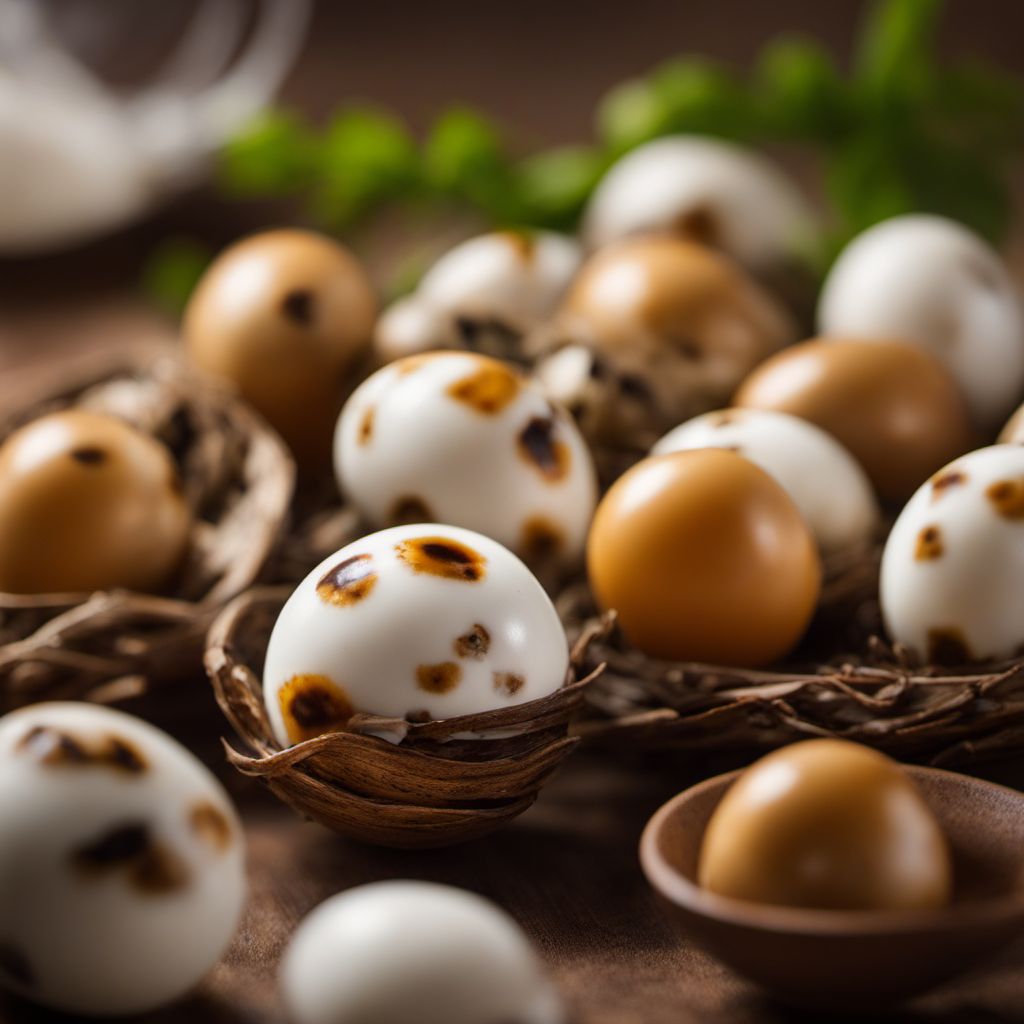
Ingredient
Japanese quail eggs
Tiny Delights: Exploring the World of Japanese Quail Eggs
Japanese quail eggs are small in size, about one-fifth the size of a chicken egg, with a speckled shell. They have a rich, creamy yolk and a slightly gamey flavor. The texture is smooth and velvety, making them a delightful addition to salads, appetizers, or as a garnish.
Origins and history
Japanese quail eggs have been consumed in various cultures for centuries. Originating in East Asia, they were initially used for their medicinal properties before becoming a culinary delicacy. Today, they are enjoyed in many countries, particularly in Japanese cuisine, where they are used in sushi, bento boxes, and other traditional dishes.
Nutritional information
Japanese quail eggs are a good source of protein, vitamins, and minerals. They are lower in cholesterol and calories compared to chicken eggs, making them a healthier alternative. Each quail egg contains approximately 14 calories, 1 gram of protein, and various essential nutrients such as vitamin B12, selenium, and iron.
Allergens
Individuals with egg allergies should exercise caution when consuming Japanese quail eggs, as they may trigger similar allergic reactions. It is advisable to consult with a healthcare professional if you have any known allergies or sensitivities to eggs.
How to select
When selecting Japanese quail eggs, look for eggs with clean, uncracked shells. The shells should be free from any discoloration or unusual odors. Fresh quail eggs will have a vibrant yolk and a firm white. Avoid eggs with runny whites or off-putting smells, as they may indicate spoilage.
Storage recommendations
To maintain the freshness of Japanese quail eggs, store them in the refrigerator at a temperature between 35-40°F (2-4°C). Keep them in their original carton or an airtight container to prevent moisture loss and absorption of odors from other foods. Use the eggs within 2-3 weeks for the best quality and flavor.
How to produce
Japanese quail eggs can be produced by raising quails in a suitable environment. Quails require a well-maintained coop or cage with proper ventilation, lighting, and temperature control. They should be fed a balanced diet that includes grains, seeds, and fresh water. With proper care and attention, quails will lay eggs regularly.
Preparation tips
Japanese quail eggs can be prepared in various ways. They can be hard-boiled, soft-boiled, poached, or fried. Due to their small size, they cook much faster than chicken eggs. They are often used as a garnish for salads, sushi, or appetizers. Quail eggs can also be pickled, added to soups, or used in omelets and quiches for a unique twist.
Substitutions
Chicken eggs can be used as a substitute for Japanese quail eggs in most recipes. However, keep in mind that the flavor and texture will differ. If using chicken eggs as a substitute, adjust the cooking time accordingly to ensure they are fully cooked. Additionally, quail eggs can be replaced with other small eggs, such as bantam chicken eggs or duck eggs, depending on availability.
Culinary uses
Japanese quail eggs are commonly used in Japanese cuisine, particularly in sushi, bento boxes, and as a topping for rice bowls. They are also popular in other Asian cuisines, where they are used in soups, stir-fries, and noodle dishes. Quail eggs can be served as a standalone dish, marinated, or incorporated into salads, sandwiches, or canapés for an elegant touch.
Availability
Japanese quail eggs are commonly available in Japan and other Asian countries. They can also be found in specialty grocery stores or gourmet markets in other regions. However, their availability may vary depending on the demand and local farming practices.
